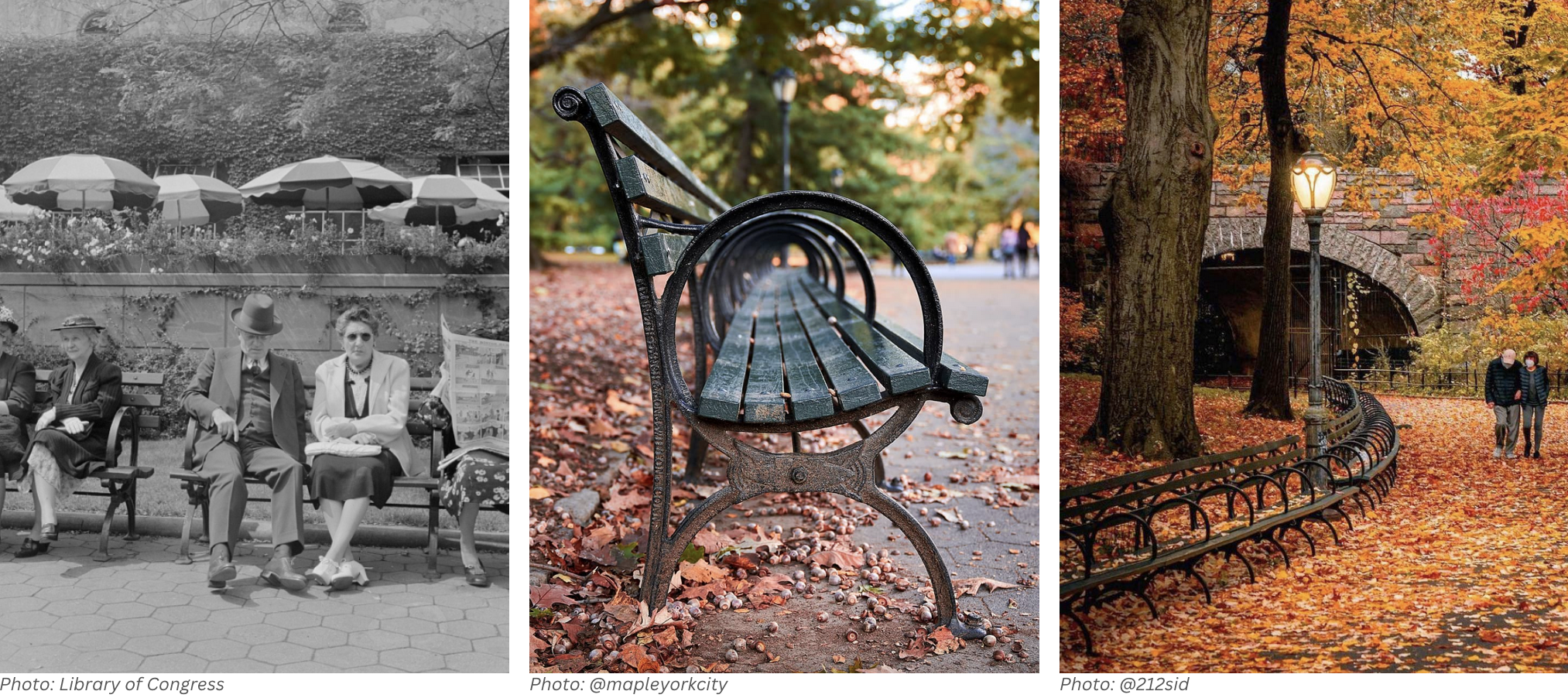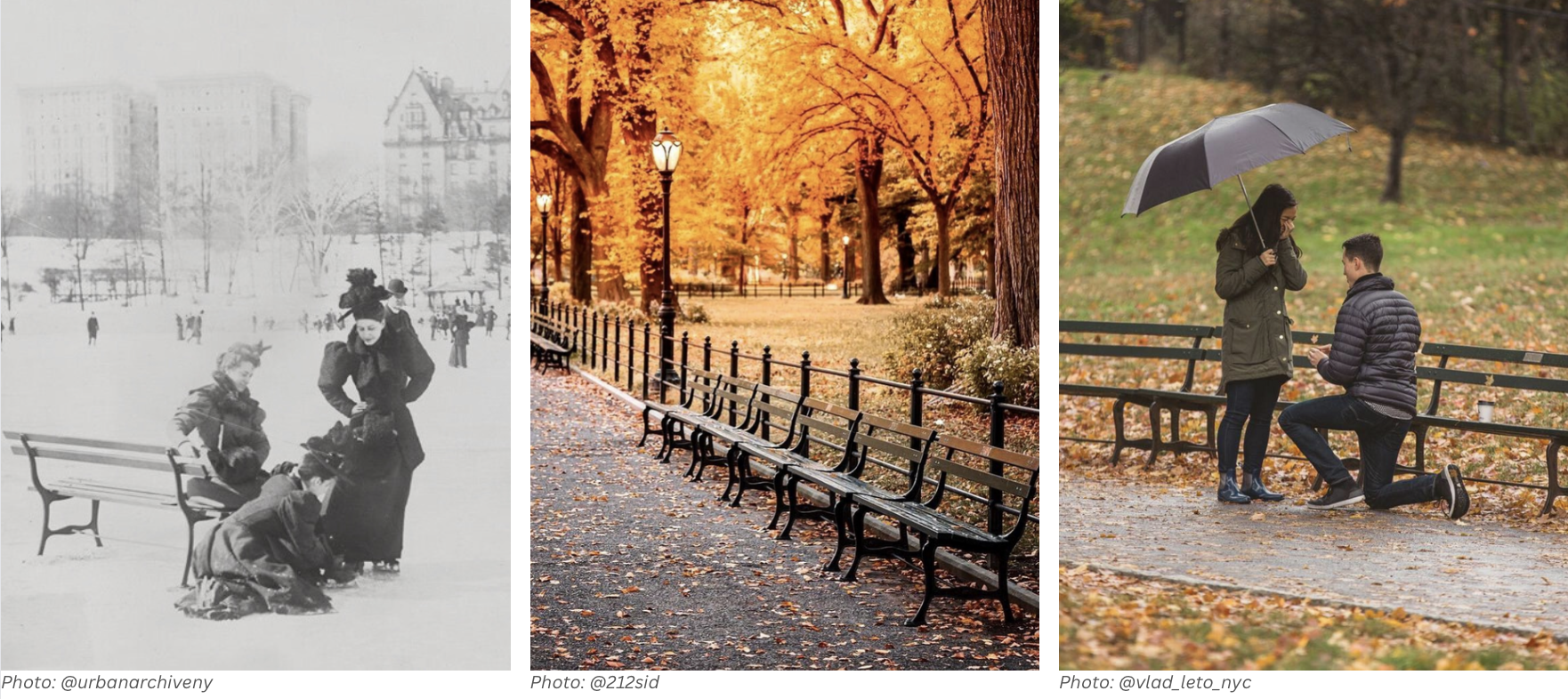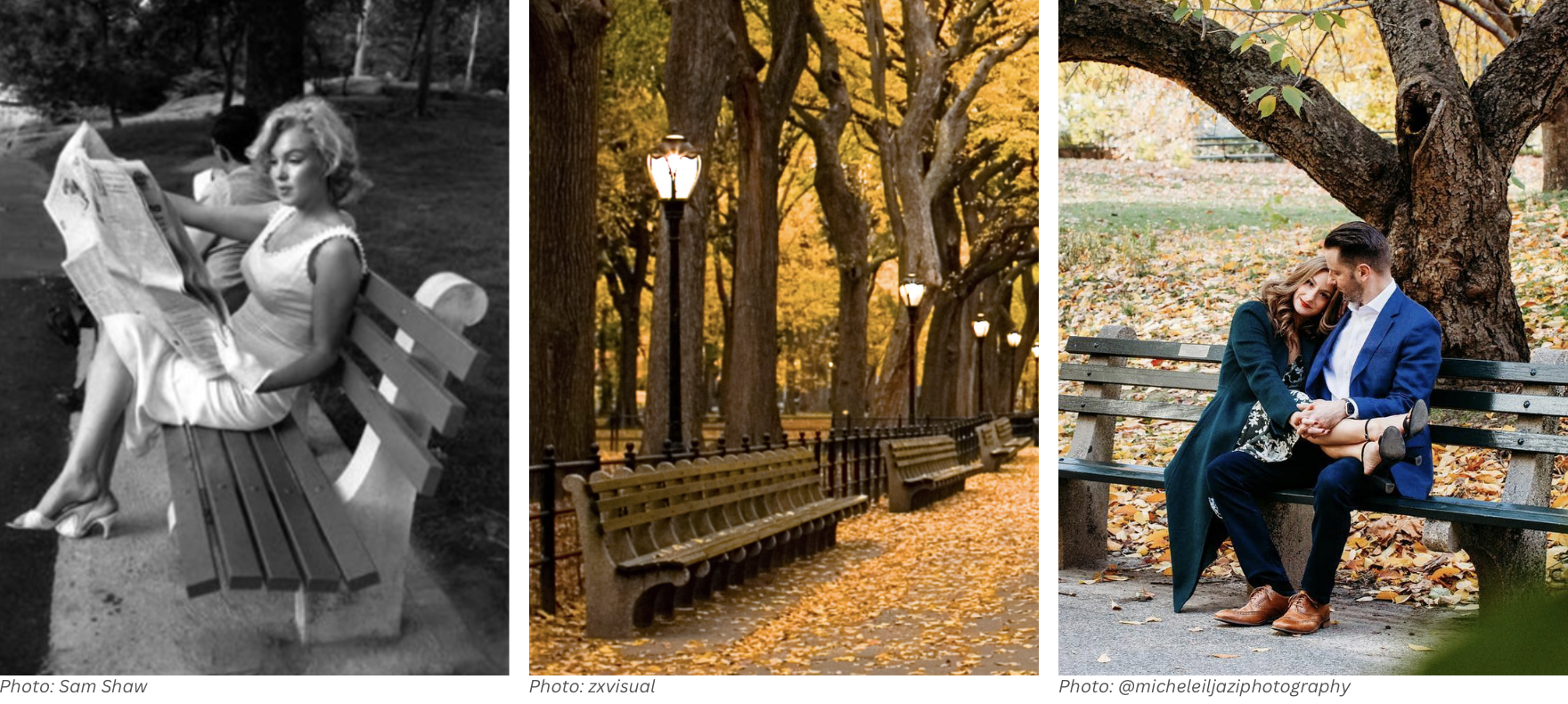Oct 30th 2023
The Iconic Benches of New York City’s Central Park
Kenneth Lynch and Sons has a long-standing history with New York City’s Parks Department that goes back to the early 1900’s. The partnership began in 1936 when New York City Parks Commissioner, Robert Moses, worked with our founder, Mr. Kenneth Lynch.
Kenneth Lynch initially became involved in the production of benches for New York City during the planning stages of the 1939 World’s Fair, which was set to take place at Flushing Meadows Park in Queens, New York. In preparation for the World’s Fair, Kenneth Lynch and Robert Moses worked together on the design for the World’s Fair Bench, which would go on to become the mainstay of park seating across all five boroughs of New York City and in parks nationwide.
Today, Central Park has over 10,000 benches and welcomes over 42 million visitors each year. We are proud that Kenneth Lynch & Sons continues to be the preferred manufacturer of benches for New York City thanks to our accuracy to the original designs, including the iconic 1939 World's Fair Bench as well as the Central Park Settee and the Concrete and Wood Bench, benches that can all be found across Central Park today.
Join us for an autumn stroll as we take a closer look at the iconic benches of New York City’s beloved Central Park!
1939 World’s Fair Bench
The original World's Fair Bench can be easily recognized by its round hoop armrests, which mirror the many round arches found along the walking paths of Central Park.
This classic bench is available in various sizes and wood options, and it can most often be seen painted in the iconic shade of evergreen, or Central Park Green. Learn more
A Historic Look at the 1939 World’s Fair Bench
Pictured below are Sunday bench sitters in front of the Central Park Zoo restaurant in the year 1942. You can see the armrests of the 1939 World’s Fair Bench, which continues to be the most popular bench style in every NYC borough.

Central Park Settee
The design of the Central Park Settee is based on benches used during the creation of New York's Central Park around the year 1858.
This relaxed and simple bench design was reintroduced to Central Park in 1994, and has been used in informal and open space areas of Central Park. It can also be found along The Mall, or Literary Walk, the iconic walking path that leads to the beautiful Bethesda Terrace. Learn more
A Historic Look at the Central Park Settee
In December of 1858, Central Park Lake opened for its first winter of ice skating. Pictured below are ice skaters during the winter of 1894 seated on an original Central Park Settee, a design used during the creation of Central Park under the direction of Olmsted and Vaux. Kenneth Lynch & Sons reintroduced the production of this original design in 1994 and we continue to produce the Central Park Settee to this day.
We are also always happy to see our benches be a part of proposals and engagements, wedding photos, and endless love stories!

Concrete and Wood Park Bench
The Concrete and Wood Park Benches can be found along the perimeter of Central Park, often along the stone walls that surround the park.
This bench style is a familiar sight for strollers along Central Park West and Fifth Avenue and have become an integral part of the New York City streetscape. Learn more
A Historic Look at the Concrete and Wood Park Bench
Pictured below is Marilyn Monroe, iconic American actress and symbol of beauty and glamour in the 1950’s, reading a newspaper on a Wood and Concrete Bench in Central Park in 1957.

Central Park Conservancy’s Adopt-A-Bench Program
Want to dedicate a bench to a loved one? The Central Park Conservancy’s Adopt-A-Bench program was established in 1986 as a permanent fund to maintain and endow the care of Central Park's more than 9,000 benches and their surrounding landscapes. To date, more than 7,000 benches have been adopted. Learn more
Learn More
To view all our bench designs, take a look at our Urban Seating Collection
Read more about the history of Central Park in “Central Park: Then & Now”




